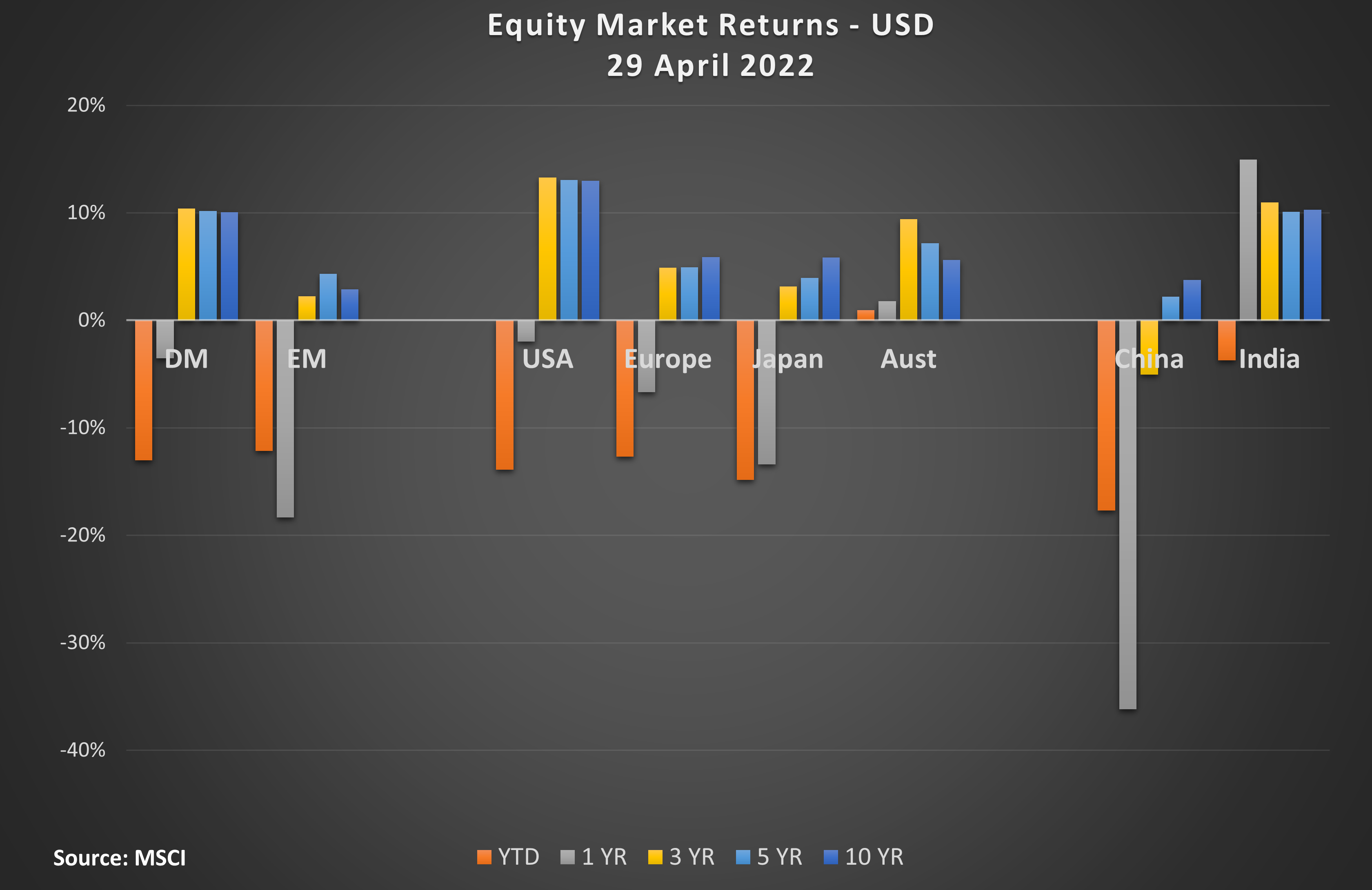10 years gone, 20 years to go
The last 10 years have been a relatively rosy environment for equity markets around the globe. Post GFC in 2008, a brief hiccup with the US Debt Ceiling issues, and the taper tantrum, markets have been rising on a discount rate of next to nothing as interest rates fell globally (until COVID-19 hit us). In such an environment equity valuations rose, driven by rising P/E's rather than rising earnings.
However, looking forward from here, it appears that earnings growth will need to do the hard work in a rising rate environment. Excitement about the transition to renewable energy, technology and innovation, new age medicine and mobile apps, will require greater transparency on earnings and cash flows for those company's stock prices to push ahead from here as hurdle rates rise.
In general, US companies have been superior in most categories and its equity market has shown leadership over the past 10 years. Emerging markets, which were expected to be the leaders given their growth fundamentals, were in fact significant laggards.

The equity market returns in the chart above, computed in USD, show a fairly clear picture. Regionally the US equity markets have driven global equity markets returns, ahead of Europe, Japan, Australia. Whilst Emerging Markets as a group have significantly underperformed Developed Markets over the last 1, 3, 5 and 10 years, it is not all constituents of EM which have fared poorly. In fact, in India's case its equity market has kept pace with the US (even in USD terms).
Yet many savvy institutional investors and leading investment consultants continue to view investing in Emerging Markets as a "safer" investment than investing in a single country like India. From a perception view point the case can be made that a broader opportunity set provides a more diverse range of exposure across economies, which should to lead to lower volatility. However, investment portfolios are not assembled in isolation! Evidence shows that India's equity market correlation with AUD based assets is close to half that of Emerging Markets equities correlation with Australian equities. In any case, don't Australian investors have significant exposure to just three markets in particular i.e. Australia, US and China (probably close to 40-45% of the portfolio for a "Balanced Option" investor)?
Is India's growth story an ideal fit for Australian domiciled clients with AUD assets, given its low correlation and secular growth. Evidence over the last 10 years points to this!
India's companies (as an aggregate) exhibit extremely low earnings volatility (relative to other regions like the US, Australia), given companies in that market having potential to compound earnings due to the nature of significant and growing addressable markets available. With India's growing global economic presence and participation in supply chains, the ability to grow earnings should have significant upside due to operating leverage.
In an environment where earnings growth will be critical to maintain and increase share prices, it seems obvious to back fundamentals which are more secular rather than cyclical over the next decade.
Never miss an insight
Enjoy this wire? Hit the ‘like’ button to let us know. Stay up to date with content like this by hitting the ‘follow’ button below and you’ll be notified every time I post a wire.
4 topics

